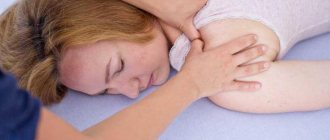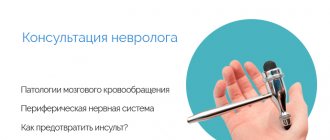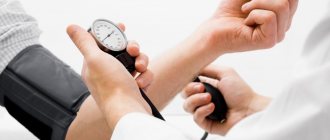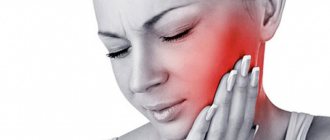Price list Doctors clinic
Vegetative-vascular dystonia, or rather, autonomic dysfunction, is a complex of disorders associated with decreased function of the autonomic nervous system. This is a syndrome that includes various dysfunctions of organs and systems. They are caused by a disorder of nervous regulation.
A neurologist treats dystonia. At the same time, a good, experienced specialist will not consider the disease a trifle that does not deserve attention, despite the fact that, according to statistics, up to 70% of the adult population may suffer from it. The fact is that pathology can manifest itself in different ways, and in some cases, timely therapy can prevent serious disorders and diseases.
Symptoms of the disease
VSD, in essence, consists of a violation of control over vascular tone. Common symptoms and changes associated with this include:
- sweating, “hot flashes” (feelings of heat), chills;
- tachycardia, bradycardia;
- chest discomfort, pain;
- sudden changes in blood pressure;
- dizziness, loss of consciousness;
- increased breathing, feeling of lack of air;
- headaches, migraines;
- neck pain;
- disturbances of cognitive processes (memory deterioration, decreased concentration, etc.);
- fatigue, drowsiness, weakness;
- numbness of hands, feet, feeling of goosebumps;
- redness of the skin at the slightest mechanical impact or, on the contrary, marbling of the skin at rest;
- intermittent, shallow sleep;
- abdominal cramps and pain, bloating, loss of appetite, nausea;
- decreased libido in men and women of reproductive age.
Vegetative-vascular dystonia can be an independent disorder or a signal of the presence of other pathologies: liver diseases, biliary dyskinesia, intestinal microflora disorders, gastrointestinal diseases, etc. This is most often associated with the production of toxic products that affect the state of the nervous system. In addition, when prescribing treatment for VSD, it is important to remember that allergic diseases, endocrine diseases, changes in hormonal status, etc. can lead to the disease. Therefore, other signs may be added to the symptom complex. This often makes diagnosis difficult, but if you contact an experienced, qualified specialist, he can cope with this task.
Diagnosis and treatment of autonomic cardiac dysfunction
Autonomic dysfunction is a diagnosis of exclusion. After a number of cardiovascular diseases have been excluded thanks to laboratory and instrumental methods (ECG, EchoCG, Holter-ECG, etc.), differential diagnostics should be carried out with neuropsychiatric diseases and only in the last place should one think about vegetatives.
Treatment of a disorder of the autonomic nervous system itself should begin with improving lifestyle: regular physical activity, sports (swimming is a priority), elimination of bad habits, a good night's sleep, optimal nutrition, normalization of body weight, hardening.
Medicines used include adaptogens, daytime tranquilizers, nootropics, vascular drugs, antioxidants, and vitamins.
The importance of timely treatment
Treatment of dystonia in many cases is a mandatory measure, since this disorder can be complicated by vegetative crises. Despite the fact that this complication occurs on average in one in ten patients, severe symptoms that reduce the quality of life are also indications for therapy.
The crises are as follows:
- sympathoadrenal: based on a sharp release of adrenaline into the blood, which leads to spasm of blood vessels, headache, increased heart rate, chest pain, panic attack and severe fear;
- vagoinsular: insulin is released into the blood, which leads to a sharp decrease in glucose levels, characterized by a decrease in heart rate and a decrease in blood pressure;
- mixed: there is a combination of symptoms.
The result of VSD, which has not received enough attention, can be arterial hypertension, tachycardia, arrhythmia, neuroses, cholelithiasis and disorders of the gastrointestinal tract, etc. A person’s social life may suffer: he experiences difficulties at work and in communicating with others, due to the frequent manifestation of symptoms, he cannot cope with professional and other responsibilities. Therefore, complex treatment of VSD is indicated for virtually everyone who in one way or another suffers from manifestations of the disease.
Vegetative-vascular dystonia: which doctor should I contact?
What are the causes of its occurrence, and which doctor should you contact to receive comprehensive treatment?
Degree of disease development
Depending on the severity of VSD, it is customary to divide it into the following stages:
- Initial. It is characterized by mild pain in the heart that occurs after emotional experiences or physical exertion. Exacerbations do not occur often.
- Average. The duration of periods during which exacerbation occurs increases.
- Heavy. Pronounced symptoms of the disease are almost always present. A rapid heartbeat is often observed, accompanied by PA (panic attacks).
Causes
The primary causes of the disease, as reported by the portal https://lechusdoma.ru/zabolevaniya/, may be associated with damage to the central nervous system of the child still in the womb. As a rule, this occurs in late pregnancy or directly during labor. In addition, VSD can begin to develop in children who live in an unfavorable family atmosphere, have problems communicating with peers, and also often experience stress, physical and nervous fatigue.
As for secondary causes, they manifest themselves as a result of pathological changes in the digestive, endocrine, nervous and cardiovascular systems, which are chronic. In addition, the development of VSD can be caused by a change in climatic conditions, addictions, allergies, poor diet, vitamin deficiency, frequent stress, depressive states, as well as spinal injuries and osteochondrosis.
Which doctor should I contact?
If there are signs of VSD that persist for 2 months or more, you should first visit a general practitioner and a cardiologist. An initial examination by these specialists will show whether the help of an endocrinologist, psychiatrist, ophthalmologist, gastroenterologist, neurologist, surgeon or ENT specialist is needed. Since only a highly specialized doctor will be able to correctly identify the problem and prescribe treatment that eliminates the cause of unpleasant symptoms.
Treatment of VSD is quite complex, so an integrated approach is required, including taking medications, normalizing sleep and daily routine, exercise therapy, water procedures and massage. Moreover, most patients notice improvements precisely after adjusting their diet, daily routine and giving up bad habits. In other words, lifestyle changes often help get rid of the symptoms of the disease.
Diagnostic features
The main difficulty in diagnosing VSD is to find the true cause of the disorder: a disease or disorder that has led to inadequate control of vascular tone by the nervous system. However, when contacting a neurologist, he will first find out your medical history, as well as lifestyle features.
In the event that there is non-compliance with the daily routine or bad habits, the primary recommendation would be to normalize the rhythm of sleep and wakefulness and maintain a healthy lifestyle. If the situation does not improve within a few weeks, it is important to look into the problem in detail.
It is necessary to exclude organic diseases of the nervous system. This may require various methods: from CT of the brain and EEG to ultrasound examination of the vessels of the neck. It is important to undergo laboratory diagnostics (blood tests, determination of hormone levels) and consult an endocrinologist and cardiologist.
Causes of VSD
The basis of the disease is a violation of the neurohumoral regulation of the autonomic nervous system, which is responsible for the stability and coherence of the activities of all internal organs and the body as a whole. This is a department of the nervous system that is not subject to the consciousness and control of the human will.
There are many causes of the disease. Among the first are hormonal disorders, including transient ones - during puberty, menopause, and pregnancy. Infectious diseases (including physical detraining after infection), foci of chronic infection (caries, sinusitis, tonsillitis), and allergies play a significant role. Psycho-emotional stress, traumatic brain injuries, a sedentary lifestyle, bad habits - smoking, alcohol, unhealthy diet - predispose to the disorder. Hereditary predisposition is important.
Make an appointment with a doctor
To sign up for a cycle, choose any method:
- call the clinic +7 (495) 103-99-55,
- order a call back,
- leave a request for an appointment using a convenient form on the website:
SIGN UP
At the Kuntsevo Medical and Rehabilitation Center, we have created all the conditions so that you can undergo rehabilitation from 8 am to 10 pm on weekdays and from 9 am to 9 pm on weekends.
Our center is within walking distance from the Molodezhnaya metro station.
If you are driving, a nice addition will be free parking for our visitors.
VSD Treatment of vegetative-vascular dystonia
Based on examination data and the totality of external manifestations of the disease, a final diagnosis is made, treatment tactics are selected, and a special individual program is drawn up.
Treatment of vegetative-vascular dystonia
It is carried out comprehensively by doctors: a neurologist, a psychotherapist, a therapist, a cardiologist, and a reflexologist. Highly effective methods, especially for tension headaches, are:
- botulinum therapy
- acupuncture
- hirudotherapy
- drugs according to a special program
Types and symptoms
In medical practice, VSD is divided into:
- cardiological type. Shortness of breath, sharp or dull pain in the chest, rapid heartbeat,
- tachycardial type. Vibration is felt in the vessels, the pulse quickens, the face turns red, the pain in the temples progresses,
- hypertensive type. The heart rate increases, blood pressure rises, legs go numb, chills are felt,
- visceral type. The pain is localized in the intestines and abdomen, there is a feeling of fullness, constipation or diarrhea appears,
- hypotonic type. Weakness, shortness of breath, nausea, sweating and low blood pressure are the main signs
- asthenic type. Characterized by fatigue, decreased stamina, loss of attention, trembling hands,
- respiratory type. You feel a lump in your throat, there is not enough air, there is a pressing pain behind the sternum,
- mixed type.
Exacerbation of VSD occurs sharply due to stress, poor nutrition, depression, hormonal imbalance, chronic diseases, etc. These symptoms are accompanied by severe unbearable pain.
What will not help with the diagnosis of VSD
Very often, after vegetative-vascular dystonia is diagnosed, the local therapist sends the patient to drink vitamins, nootropics, nicotinic acid and motherwort. But there are two dangers in this:
- The patient was not properly examined, and the real disease remained in the shadow of the symptoms of VSD.
- Vitamins, nootropics and mild sedatives often work as a placebo, relieving symptoms only for a while - 1-3 months, after which everything returns to normal.
Diseases that are hidden under the diagnosis of VSD
What conclusions can be drawn from the previous block of the article?
Conclusion No. 1.
If you find yourself with the above symptoms, do not panic and consult a doctor in a timely manner. Because the disease will not disappear on its own, and you need to understand the reasons.
Conclusion No. 2.
Vegetative-vascular dystonia is a pseudo-diagnosis that hides a number of real diseases, which very often remain without proper treatment. Most often these are mental, neurological, endocrinological and cardiac disorders, which include:
- Anxiety and panic disorder
- Hypochondriacal disorder (this is worth paying attention to for patients who have been visiting doctors for years, taking tests and undergoing procedures that do not reveal any somatic diseases)
- Depression
- Migraine
- Hypo- and hyperthyroidism
- Hypertension
- Irritable bowel syndrome
- Cardiac ischemia
- Fibromyalgia (chronic pain syndrome)
- Asthma









